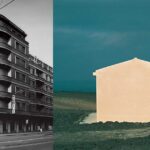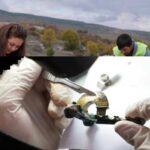
An Italian research team, working at the Stile Arte Research Center, has concluded that the Shroud of Turin assumed its current configuration after a careful interpretative restoration around 1502.
The work might be linked to the circle of Leonardo da Vinci. The hypothesis of the restoration of older materials represents a significant turning point in Shroud studies, as it views the artifact as evolving over time and does not exclude the Shroud’s earlier existence.
Moreover, the hypothesis proposed by Stile Arte suggests constant, repeated contact between the fabric and those responsible for its custody or maintenance. These interventions could have altered certain parts of the cloth, potentially affecting its dating.
The researchers analyzed techniques and applications, also discovering reversible images that belong to the Neo-Platonic figurative culture. The team at the Stile Arte Research Center verified the compatibility of the marks appearing on the Shroud with the expressive techniques of ancient monochromes, concluding that, in terms of both the marks themselves and the materials used, there is a high possibility that the Shroud was subject to interpretative restorations by an artist working between the late 15th century—around the time of Leonardo’s Last Supper—and the early 16th century, with the aim of making it more readable and “backlit.”
The interpretative restoration took place in anticipation of the relic’s permanent display, a project on which the House of Savoy worked around the end of the 15th century.
Interpretative Restoration Before 1502
“The Savoys purchased the Shroud in 1453,” explain the researchers led by Maurizio Bernardelli Curuz. “Towards the end of the 15th century, their interest in the relic grew to the point that they planned to display it permanently in their capital, Chambéry, where, in 1502, they would later build a dedicated chapel, obtaining in 1506 the authorization for public worship from Pope Julius II, with its own mass and office.”

For this purpose—before 1502—an artist of the highest technical skill must have worked on the Shroud for restoration and enhancement of the image, someone who, from a technical standpoint, could have been very close to Leonardo da Vinci, who at that time had just left Milan, entering the so-called wandering period (1499–1508), and who was certainly in contact with the Savoy family.
Bona of Savoy (1449-1503), the Stile Arte team argues, had been Duchess of Milan during Leonardo’s years there and regent for a few years after her husband’s death, as well as the mother of Gian Galeazzo Maria Sforza. The image was technically enhanced.
“What we assert is not that the Shroud is a fake,” states the Stile Arte Study Center, “but that, with certainty, the work was enhanced—in the early 16th century—with graphemes and pictorial interventions executed with a dark ochre pigment, heavily diluted in water and a rusty material, then allowed to settle for a few hours. The Shroud was to be displayed and, therefore, was extensively restored by an artist capable of envisioning it as backlit. The image, under normal conditions, is barely visible to the naked eye and can only be perceived at a certain distance. At one to two meters, it is perfectly in focus, while getting closer seems to make it disappear. These optical effects were well-known and widely used by Renaissance artists, as were the consequences of the appearance and disappearance of minor images on the cloth, in motion, and their combination, due to the flickering of torch flames.”
The work would have been carried out with a very light pigment, applied with a barely moistened brush.
Live blood marks were then revitalized using a pen, as is very evident from the ductus, the width of the “line,” and the absorbency of the fabric at the level of the arms and hands of the Man of the Shroud.


The corners of the blood traces, according to the Stile Arte researchers, are determined by the pen’s linear discontinuity on the fabric, as demonstrated by the following image, referring to the presumed blood traces on the arms or wrist of Christ. The Stile Arte Research Center suggests that the Shroud was originally intended to be backlit by torches. It may have been to enhance the legibility of the original stains to achieve a greater effect during “projections” that an artist of considerable technical knowledge was called upon, someone who “still had in mind the knowledge of Gothic art, but who was simultaneously experimenting with Renaissance realism.”
Composite Figures and Reversible Images

How the color could have been fixed
Researchers argue that, in the case of using a rust-based dye, the color would have adhered firmly to the canvas, even without being set with lye as was customary for decorating linens in nearby Emilia Romagna. The fixative was applied to everyday fabrics because the brownish-red designs and colorations needed to remain over time, despite frequent washing. Rust, on the other hand, is stable and practically indelible if the cloth is not washed frequently.
“While defining the stains,” continues the Stile Arte Research Center, “this artist worked by combining autonomous expressive nuclei, thereby giving the stains a symbolic and independent value, in accordance with the symbolic response characteristic of Neo-Platonic culture. The individual blocks were intended to appear in motion, highlighting and disappearing during the lighting of torches, whose flames flickered due to the movement of the faithful in the room or drafts caused by the opening of the church doors.” The restored Shroud was thus intended to be backlit, with a remarkable suggestive effect. It was meant to appear as a vibrating shadow, surrounded by light, like after the Resurrection. Particularly interesting is the highlighting of a sort of crucifix that becomes a cartouche in which the face appears enclosed when observed from the top of the head down to the chin (image above).

The image is simply rotated and becomes reversible (image below).

The whole resembles a sort of dove perched on an anchor. A coincidence, or did the artist who redefined the Shroud also work with a symbolic intent? Does the grapheme represent the safe harbor after the Flood? It is evident that the structure of the beard, enclosed in a rectangle with rounded edges, does not conform to the canons of realism.
The Carbon-14 Test of 1988
One of the most famous and controversial examinations conducted on the Shroud is the carbon-14 test, performed in 1988. For this analysis, fabric samples were taken from three independent laboratories: the University of Oxford, the University of Arizona, and the Swiss Federal Institute of Technology in Zurich. The results of the test dated the Shroud between 1260 and 1390, suggesting that the cloth was a medieval artifact rather than a relic from the 1st century. However, this dating has raised numerous objections, particularly regarding the methodology used and the possible contamination of the fabric, which could have influenced the results.








